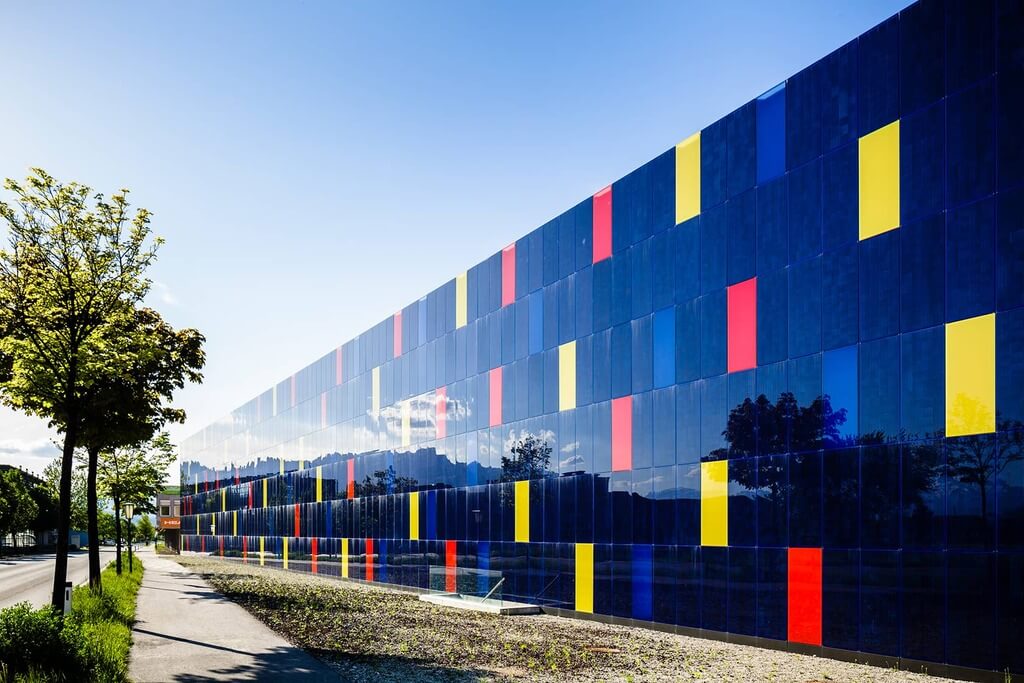With technology moving so fast new and smarter ways of living to keep coming up, a very interesting technology of photovoltaics has been introduced which is the BIPV.
Now you may ask what is this?
What is BIPV Technology?
BIPV (Building Integrated Photovoltaics). Wondering, what is this super heavy term that they just used?
Well, the meaning is actually much simpler. These BIPVs are parts or components that are used at the time of construction of buildings and other things that provide solar power to the building. Isn’t this amazing?
Advantages of BIPV

Undoubtedly this technology is a very good technique to take the game up a notch. Designs don’t need to be complicated they just need to be resourceful and smart. BIPV facades are the latest addition to solar energy technology.
With the help of these facades, you can convert sunlight into electricity and use it for your home or office needs.
There are many benefits of installing a BIPV facade on your home or business:
1) You save money on your energy bills.
2) Solar modules for building integration open up the possibility of making additional parts of your building usable for power generation. This way you can increase your share of self-generated energy.
3) You reduce your carbon footprint by using solar energy instead of polluting sources;
4) BIPV facades are aesthetically pleasing, so your property will look more appealing to potential buyers or tenants.
5) They are components that are just installed in the right places and ways to generate solar power. This helps in reducing the cooling loads and helps with energy consumption by utilizing daylight.
6) This design is exactly what one needs to amp up their building aesthetic. Ditch the old, regular pattern and you can go for something smart and resourceful at the same time.
7) It helps with reducing the additional costs of installing solar energy-generating equipment.
Applications of BIPV

BIPVs are installed during the process of construction of the building or during renovations of existing buildings. They are generally installed in places that receive a good amount of broad daylight to absorb and generate energy. Here are a few places where one can install BIPV in their office or building.
Roofs
transparent solar glass roofs in the overhead area for the roofing of terraces, atriums, etc. Depending on the application you can choose between VSG and insulated glazing with integrated photovoltaics.
Facades
A new way to maximize energy input is to additionally integrate photovoltaics into facades. Special PV modules approved for use in facades are used for this purpose.
Shading Systems and Balconies
Externally using these BIPVs can also be beneficial and can give a new decor to your home and office from the outside.
Since, these BIPVs not only help in generating electricity from solar energy but also offer other features like thermal insulation, noise defense, safety, and weather protection.
Disadvantages of BIPV Technology

BIPV technology requires a bit more planning, as the modules are individually adapted to the buildings.
After all, they should be optimally integrated into the appearance and not be perceived as a disturbing factor, like a standard module in the façade would be.
For this, you get a perfect result. And as with all photovoltaic systems – you need sunlight. Therefore, BIPV facades are not recommended for north facades.
Which Do You Prefer, Bipv Technology or Standard Photovoltaic Panels?

Standard PV modules are reliable in delivering electricity. The crux, however, is that they do not match the general requirements of building construction standards as a building material for use in facades, and their appearance is not satisfactory as well.
BIPV modules, on the other hand, are specifically designed and approved for use in the building envelope. Those glass-glass-modules focus not only on power output but also on appearance. This makes them perfect for use wherever the PV system is visible.
It is ideal to complement standard photovoltaics and BIPV to get the most out of your building, e.g., a standard system on the roof, a photovoltaic façade with colored BIPV modules, and transparent photovoltaic roofing with insulating glass in the atrium.
Conclusion
Above, we have discussed what BIPV technology is, what are the advantages and disadvantages of this, the applications, and what’s a better pick. standard photovoltaics modules and special glass-glass modules for building integration (BIPV).
BIPV modules are a great modern-day solution for smart and advanced ways to generate electricity, as well as give your home or workspace a new look.
Sunovation provides the most updated and advanced solutions for energy generation. The company is one of the leading manufacturers of glass-glass-modules for building integration in architecture and has a lot of impressive references. You can refer to their website to know more about them and their product range.
In case you missed it!

